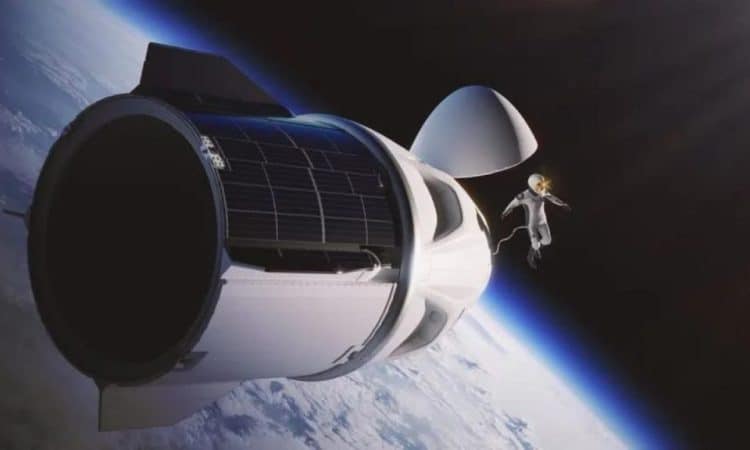
The mission will reach an altitude never reached since the Apollo missions, which brought man to the Moon.
The mission Polaris Dawn of SpaceX launched today from the Cape Canaveral Space Center, marking a new chapter in the history of space exploration. With an expected maximum altitude of 1,400 kilometers, the mission will reach an altitude never reached since the Apollo missions, which brought . In addition to this extraordinary achievement, Polaris Dawn also features the first spacewalk performed by non-professional astronauts, making the feat even more unique.
Advertisement
A civilian crew for a historic mission by SpaceX
The launch, which took place at 11:30 am Italian time, offers Elon Musk an important opportunity to show off the new extravehicular activity suits produced by SpaceX. , equipped with a head-up display, cameras integrated into the helmet and an advanced joint mobility system, will be worn by the four crew members, all civilians. Leading the team is Jared IsaacmanCEO of Shift4 Payments, which funded the project, although it did not disclose the total investment.
To complete the crew there are Scott Poteetmission pilot and retired U.S. Air Force lieutenant colonel. Sarah Gillischief engineer of space operations at SpaceX; And Anna Menonmedical officer and also chief space operations engineer. The team underwent more than two years of training, which included hundreds of hours on simulators and challenging physical activities such as skydiving, scuba diving and even climbing a volcano in Ecuador.
The takeoff, initially scheduled for an earlier date, was postponed due to technical problems at the launch tower and less than optimal weather conditions. Since the capsule will not dock at the International Space Station, the conditions for the landing, expected in six days, also had to be perfect.
A journey into the unknown and beyond
Twelve minutes after launch, applause erupted in the control center when the Crew Dragon has successfully separated from Falcon 9. The first glimpses of Earth appeared as the spacecraft reached . On the first day of the mission, Polaris Dawn will ascend to the Van Allen radiation belt, a region filled with high-energy charged particles that are dangerous to human health in case of prolonged exposure.
The altitude of 1,400 kilometers, three times that of the orbit of the International Space Station, had not been reached for more than half a century. Polaris Dawn is the first of three missions planned by the Polaris program, born from the collaboration between Jared Isaacman and Elon Musk. The spacewalk will be just one of the most significant moments of a mission that involves the realization of 36 scientific experiments.
Planned tests include the use of contact lenses integrated with microelectronics to monitor changes in eye pressure and shape during spaceflight. A laser communication system will also be tested to connect the Crew Dragon to the satellite network Starlink of SpaceX, which currently includes over 6,000 satellites for global internet connection.
Towards deep space con SpaceX
One of the most ambitious objectives of Polaris Dawn concerns the possibility of carrying out experiments near the Van Allen belt, with the aim of preparing future missions in deep space. These tests are crucial for possible expeditions to Mars and for the growing attention to the possibility of exploiting lunar mineral resources.
The Polaris Dawn mission therefore represents not only a technological achievement, but an important step forward in space exploration, laying the foundations for future developments.

